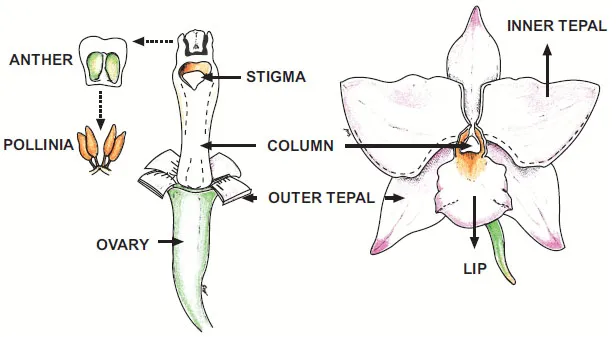The MADS-box Genes Involved in Orchid Flower Development
Serena Aceto*, Luciano Gaudio Department of Biology, University of Naples Federico II, Napoli, Italy
Abstract
Since the advent of Darwinian genetics, there has been much interest in the evolutionary origin of the Orchidaceae, one of the most species-rich angiosperm families. Orchids have highly diversified and specialized flowers, and some species exhibit an uncoupled rate of morphological and molecular evolution. Recently, these peculiar characteristics have enhanced the study of the orchid MADS-box genes involved in flower development. This large gene family encodes transcription factors that constitute the main regulatory network driving the formation of flower organs. Recent analyses have highlighted the role of the MADS-box genes in orchids and shown that different evolutionary forces act on the coding and non-coding regions of these genes. The most widely accepted theory proposed to explain the evolution of the orchid perianth is the “orchid code”, which posits that the orchid floral organs became diversified through a series of duplications and mutations of the MADS-box genes, followed by functional diversification.
Keywords: ABCDE model, adaptation, column, consensus sequence, development, evolution, flower, inflorescence, labellum, MADS-box, Orchidaceae, orchid code, ovary, phylogeny, quartet model, regulation, resupination, tepals, transcription, zygomorphy.
* Corresponding author Serena Aceto: Department of Biology, University of Naples Federico II, via Mezzocannone 8, 80134 Napoli, Italy; Tel: +390812535190; Fax: +390812535035; E-mail: [email protected] INTRODUCTION
Among the angiosperms, the Orchidaceae is one of the families with the highest number of species and is characterized by flowers with extremely divergent morphologies and specialized organs. Orchid species have colonized widely different habitats. Epiphytism, specialized pollination strategies [1], natural selection and genetic drift [2] are considered the main causes of their evolutionary success.
The orchid flower is known for its intriguing beauty and mystery, and despite great morphological variability among the different species, its organization can
be traced to a common scheme. The orchid flower is zygomorphic (bilaterally symmetrical) and includes three outer tepals (sepals), two lateral inner tepals (petals) and a highly diversified median inner tepal (lip or labellum) (Fig. 1). The reproductive structure of the orchid flower is the column, a fusion of male (stamen/anther) and female (pistil/stigma) tissues. The pollen grains (pollinia) are located at the top of the column, whereas the ovary, whose development is triggered by pollination, is placed at the base of the column [3-5]. The outer tepals can have different shapes and pigmentations, can be similar to the lateral inner tepals, or can form nectar spurs. Generally considered the most distinctive structure of the orchid perianth, the lip has a peculiar shape and color pattern and is sometimes adorned with calli, spurs and glands. The lip is homologous to the adaxial tepal of other monocots and, therefore, should be the uppermost tepal; however, during the development of the orchid flower, resupination takes place: the 180° rotation in floral orientation that shifts the lip to the lowest tepal position. The orientation and position opposite to the fertile anther of the lip after resupination suggest that the morphological diversifications in lip shape and color are the result of specific adaptations to pollinators [6].
Figure 1) Scheme of an orchid flower.
Before the widespread use of molecular techniques, the phylogeny of Orchidaceae was based on a restricted number of morphological characteristics. Some of these characteristics, e.g., the floral structures involved in the interactions between...

